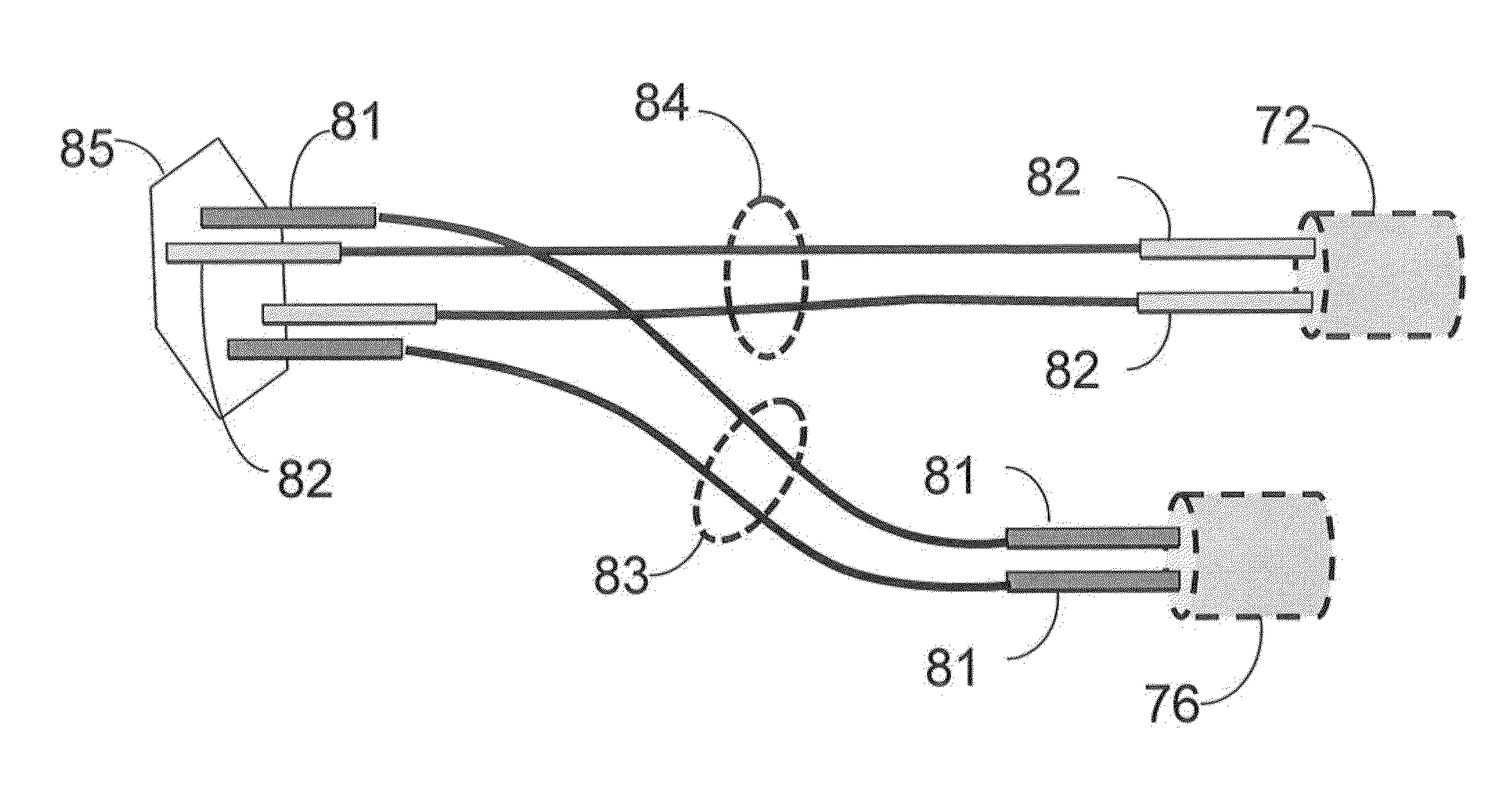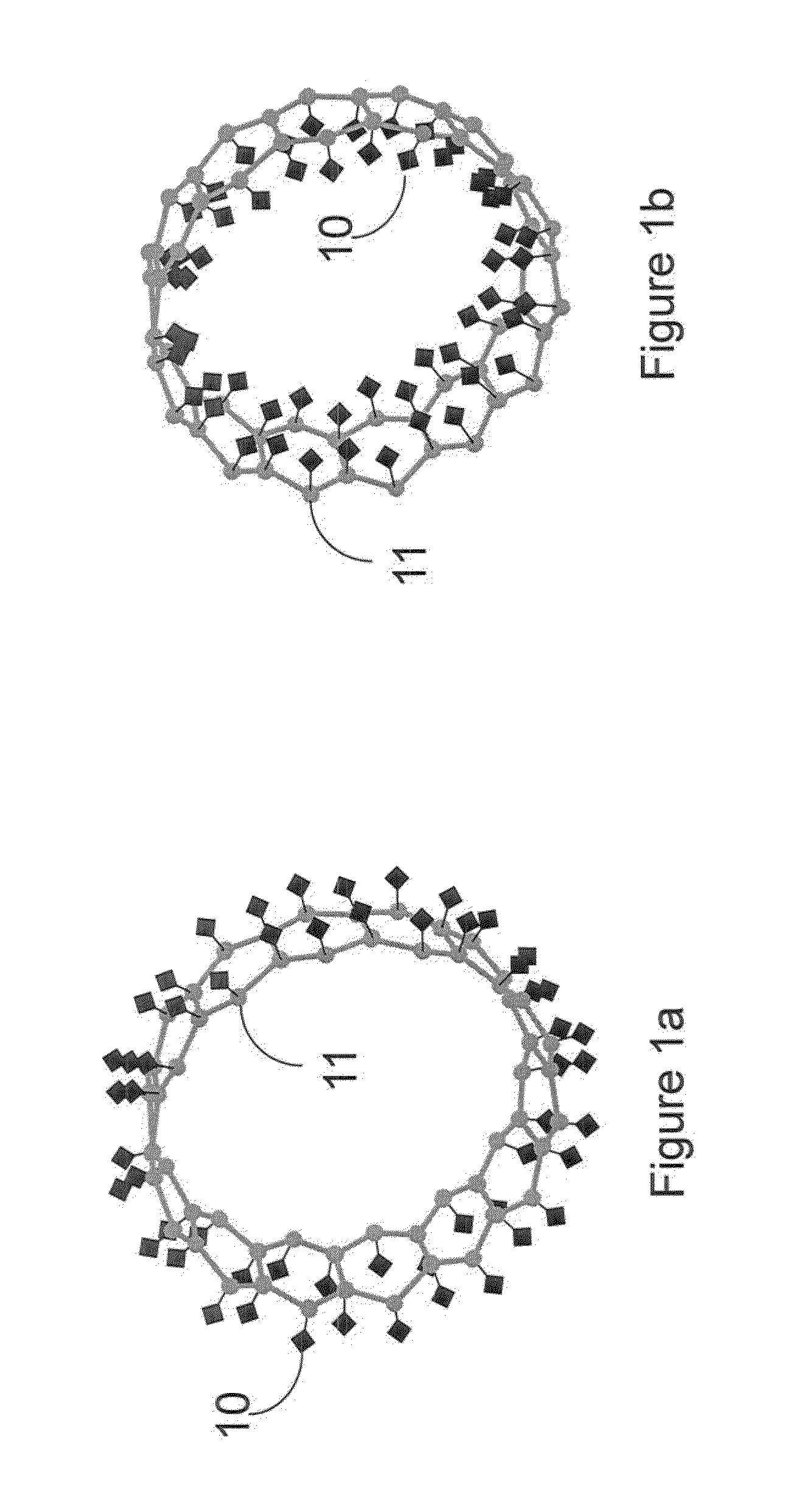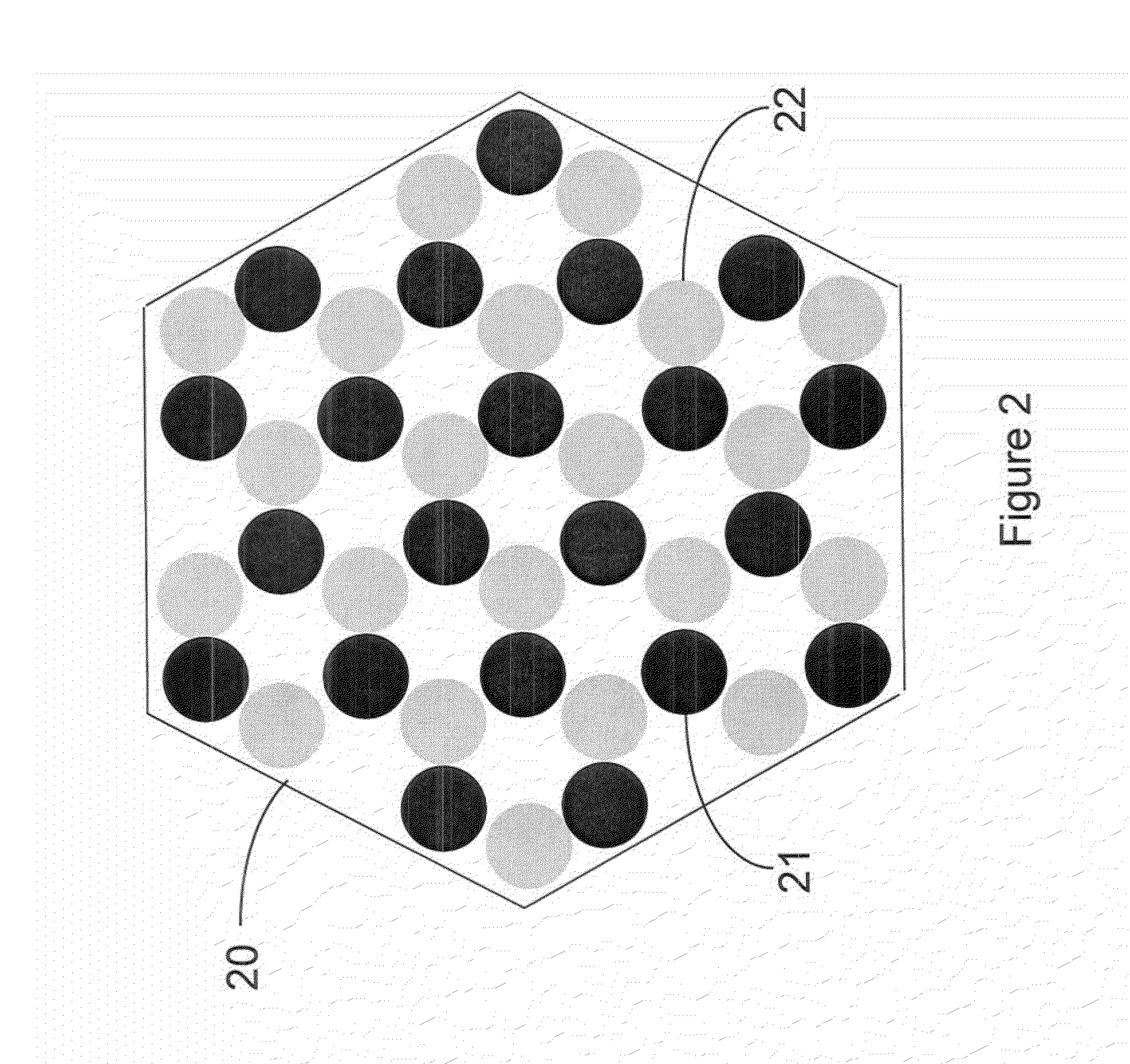Use of hydrocarbon nanorings for data storage
a technology of hydrocarbon nanorings and data storage, applied in digital storage, magnetism of organic/organic metal materials, instruments, etc., can solve the problems of easy generation of electrical energy, loss, etc., and achieve the effect of little or no energy loss
- Summary
- Abstract
- Description
- Claims
- Application Information
AI Technical Summary
Benefits of technology
Problems solved by technology
Method used
Image
Examples
Embodiment Construction
[0005]In some embodiments of the invention, hydrocarbon nanorings may be used in storage of information. Sufficiently cooled, an externally hydrogen-doped carbon nanoring may be used to create a radial dipole field to contain streams of electrons. Similarly, an internally hydrogen-doped carbon nanoring may be used to create a radial dipole field to contain streams of positrons. When matched streams of positrons and electrons are sufficiently compessed they may form Cooper pairs with their magnetic moments aligned to the movement of the stream. Matched adjacent Cooper pairs of electrons and positrons may contain information within their magnetic moments, and as such, may transmit and store information with little or no energy loss.
BRIEF DESCRIPTION OF THE DRAWINGS
[0006]In the accompanying drawings, reference characters refer to the same parts throughout the different views. The drawings are not necessarily to scale; emphasis has instead been placed upon illustrating the principles of...
PUM
 Login to View More
Login to View More Abstract
Description
Claims
Application Information
 Login to View More
Login to View More - R&D
- Intellectual Property
- Life Sciences
- Materials
- Tech Scout
- Unparalleled Data Quality
- Higher Quality Content
- 60% Fewer Hallucinations
Browse by: Latest US Patents, China's latest patents, Technical Efficacy Thesaurus, Application Domain, Technology Topic, Popular Technical Reports.
© 2025 PatSnap. All rights reserved.Legal|Privacy policy|Modern Slavery Act Transparency Statement|Sitemap|About US| Contact US: help@patsnap.com



